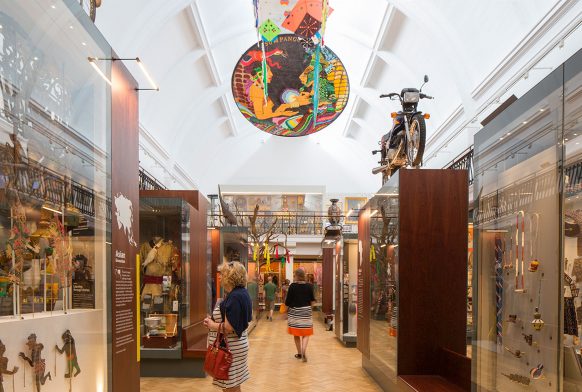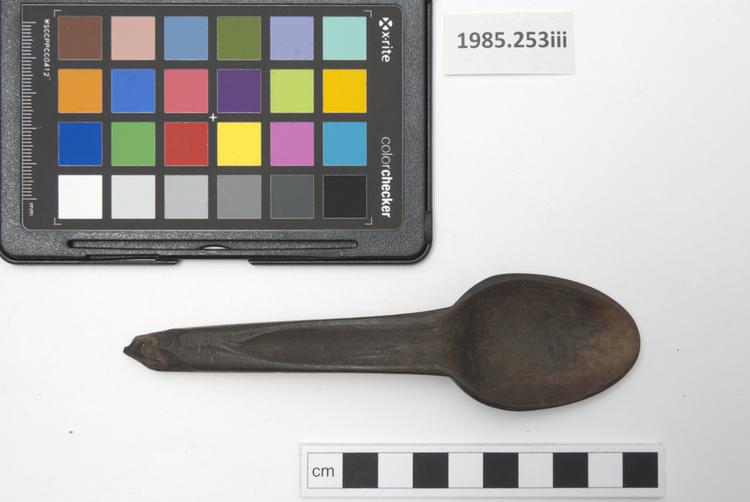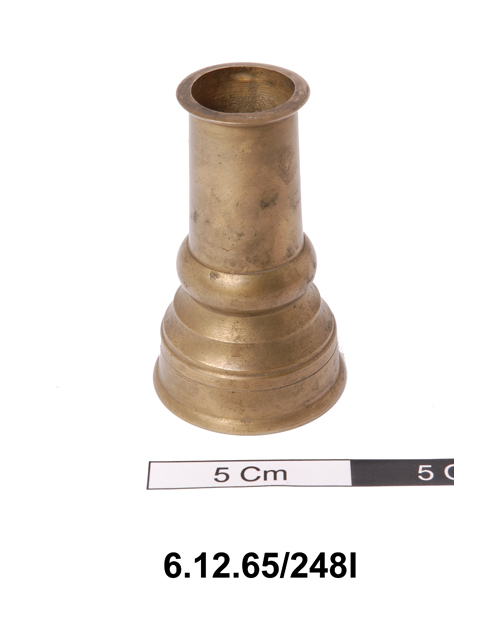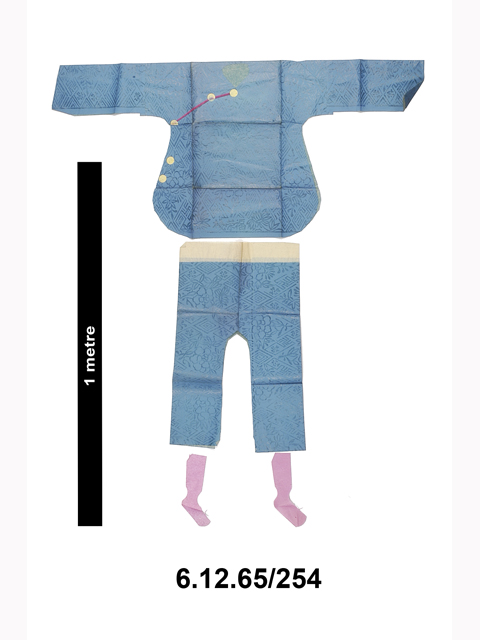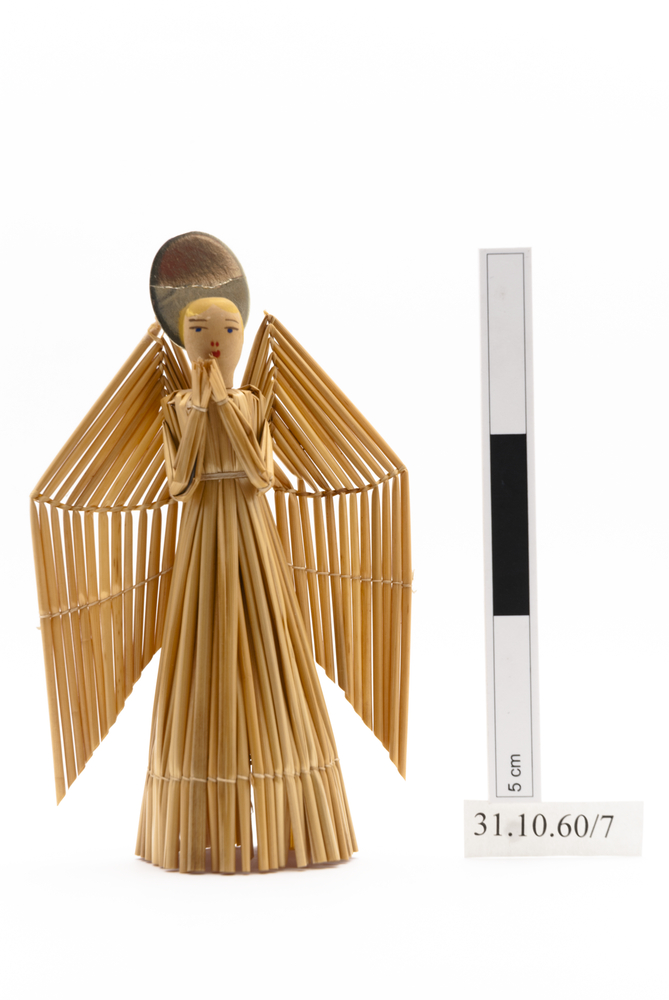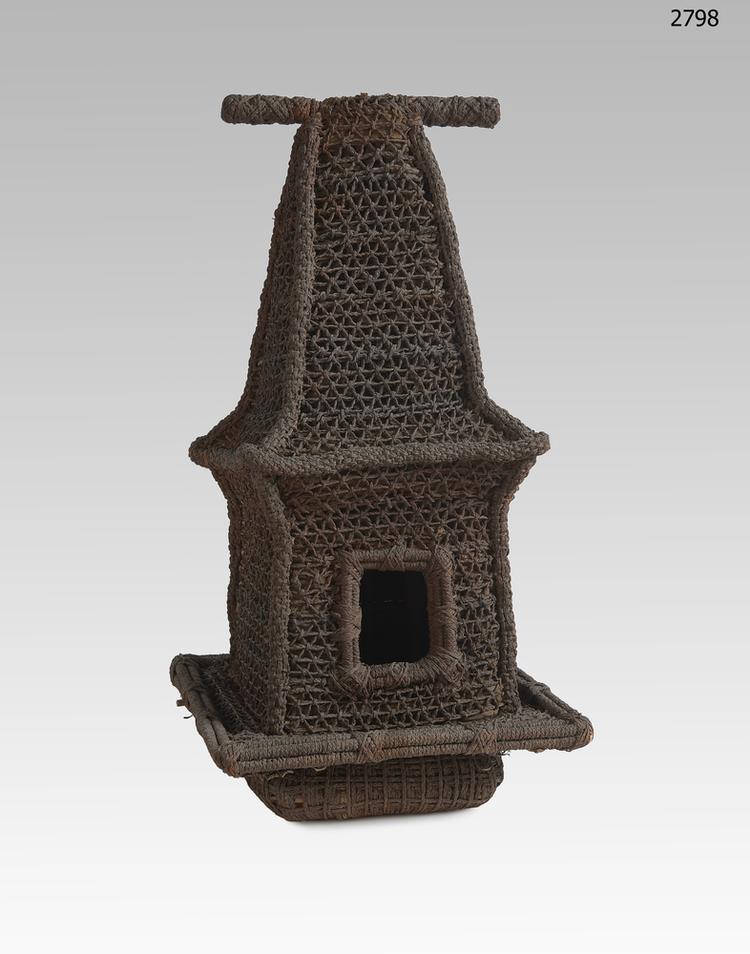



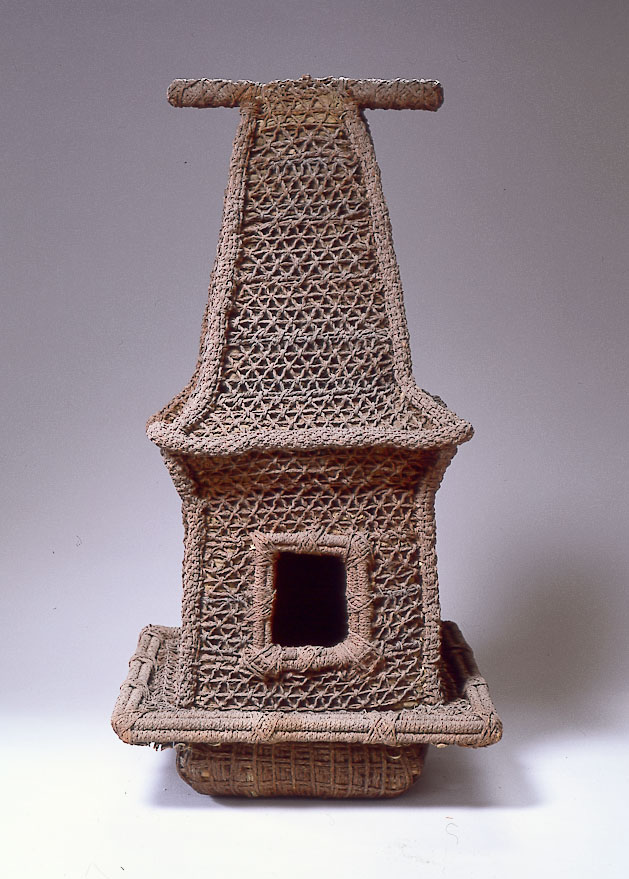
Fijian god house constructed from a scaffold of small sticks and laths surrounded by a wrapping of Western calico of a dun colour, and then a final outer layer of coconut fibre cordage knotted into an elaborate mesh of tessellating isosceles triangles. This God vessel would originally have contained a small wooden or ivory anthropomorphic figure, and would have stood in the centre of a building of exactly the same shape, or acted as a portable manifestation vehicle.
God-House, Burekalou, Fiji, Western Polynesia Although the pre-Christian Fijians revered several different kinds of supernatural beings, they primarily worshipped their own deceased ancestors. Unless caught and contained within the first four days after death, the spirit would move on to the afterworld, Bulotu, and become un-contactable. This little basketry model of a pre-Christian temple (bure) was intended to prevent that happening, and provide a container for the divine ancestor (kalou). These burekalou god-houses were placed on top of the grave for the first few days after burial, so that the kalou could take up residence inside. Thereafter, the burekalou could be safely removed and placed in the full-size village temple, or the family home, for the kalou’s worship and consultation by their relatives. Archaeologists have found that many ancient Fijian villages were established on the burial mounds of unknown but important individuals, and so we can understand the burekalou as a miniature version of what happened when the full-size village temple was founded. Burekalou often contained little wooden statues called lialiakau, the deceased’s throwing club (i ula), or a whale tooth ceremonial valuable (tabua). Wrapped up into a bundle with yellow-dyed barkcloth, the kalou spirit was understood to inhabit these relics when summoned. In this way, the ancestor-god’s spirit was contained layer upon layer, with personal relics, cloth, basketry and architecture. Wood, coconut fibre cordage, Western trade calico. Mid-19th Century. Purchased in London by Frederick Horniman before 1898.



